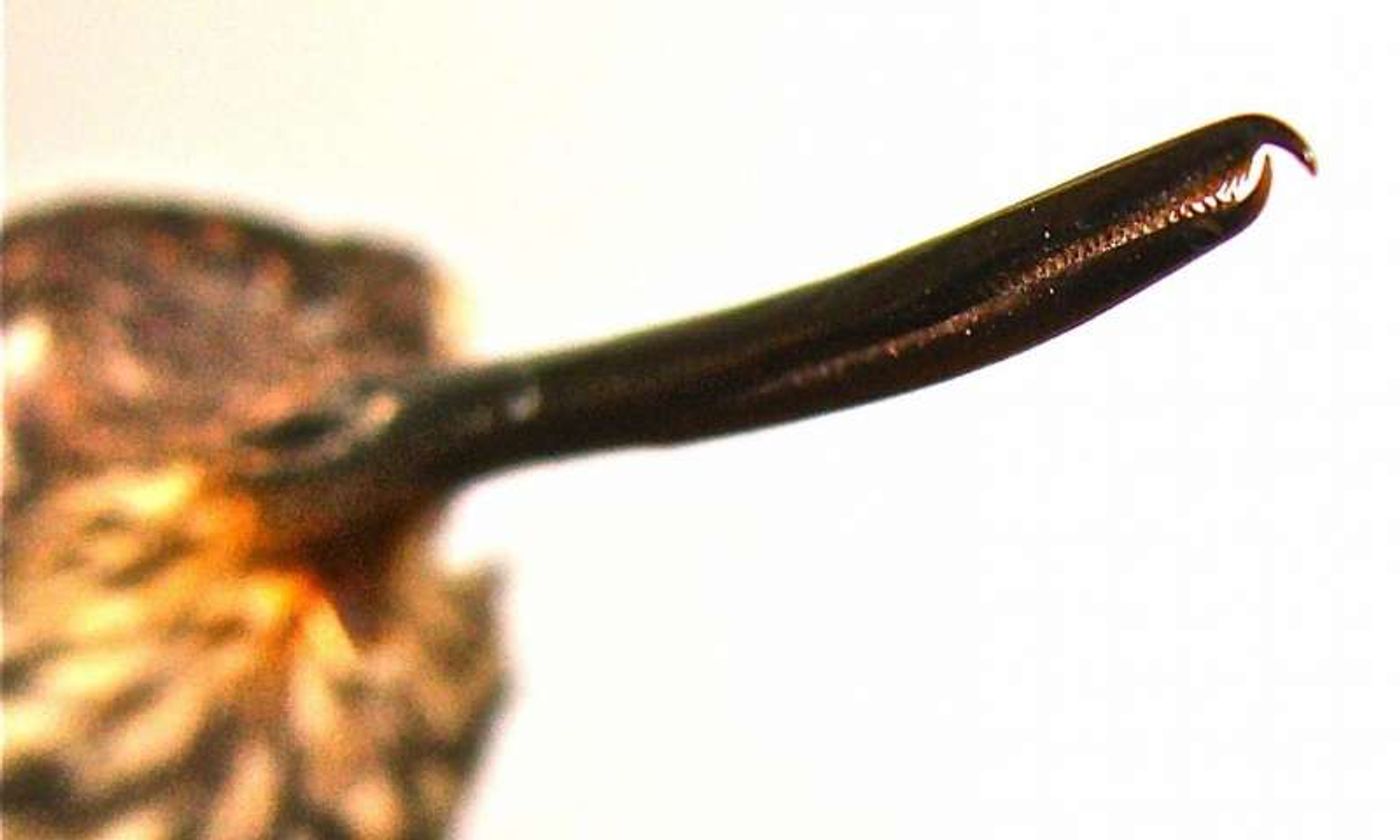Some Hummingbirds Are Built for Fighting Instead of Feeding
Hummingbirds are seemingly peaceful creatures; with their long, flexible bills, they’re continuously sipping nectar from plants to fuel their perpetual motions. But according to new research published this week in the journal Integrative Organismal Biology by researchers from the University of California – Berkeley, not all hummingbirds partake in peaceful behavior.
Image Credit: Kristiina Hurme
Indeed, it now seems that a hummingbird species native to South Africa is more tailored for fighting than feeding. As the researchers note in their paper, the tooth-billed hummingbird (Androdon aequatorialis) sports a straight, stiff bill with a hooked tip and serrated teeth that appear to be ideal for close-quarters combat.
“We understand hummingbirds’ lives as being all about drinking efficiently from flowers, but then suddenly we see these weird morphologies – stiff bills, hooks and serrations like teeth – that don’t make any sense in terms of nectar collection efficiency,” explained study lead scientist Alejandro Rico-Guevara from UC Berkeley.
“Looking at these bizarre bill tips, you would never expect that they’re from a hummingbird or that they would be useful to squeeze the tongue.”
Related: Bigger birds dominate food sources, study finds
Curious as to how the tooth-billed hummingbird used its bill, the researchers deployed high-speed video cameras to record the animals in action. Captivatingly, they competed with other hummingbirds for food, using their bills to fence and pinch with rival birds – some hummingbirds and some not.
Researchers have long known hummingbirds to fence-fight for food sources, but this is allegedly the first time researchers have captured this behavior in motion with high-speed cameras to determine their fighting strategies. Most of the time, these fights happen in the blink of an eye; the quarrel typically ends before anyone gets a chance to grab their camera.
"Because it happens so fast and they fly away, you can't track them," Rico-Guevara added. "But also, people haven't actually looked at the details of the beaks. We are making connections between how feisty they are, the beak morphology behind that and what that implies for their competitiveness."
Related: Watch a bird take flight in ultra-slow motion
But why has this particular hummingbird species evolved to have such an aggressive beak? As it would seem, competitiveness for food sources may be more intense in the jungles of Columbia, requiring a more weaponized bill to ensure feeding success.
Given how much energy hummingbirds burn while beating their wings as quickly as they do, securing a food source is vital to their survival. Without this evolutionary trait, the tooth-billed hummingbird’s success in nature wouldn’t have been as profound.
Studies are ongoing to discern hummingbirds’ feeding and mating strategies, but armed with this new trough of knowledge, perhaps we’re one step closer to understanding the species. It should be interesting to see what new information the next study brings.









